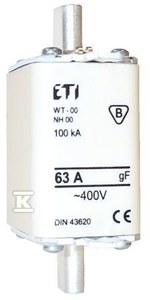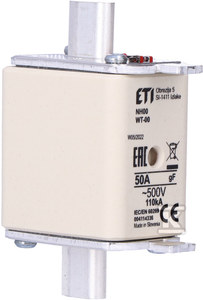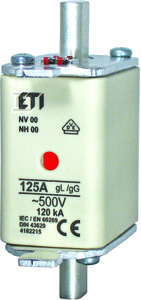Electrical safety is a key issue in every place - in homes, industry, public institutions. To ensure that electrical devices and installations are not exposed to current overload, various types of protection are used. Among them, a very important group are fuse links, also known as fuses. Let's learn what's important about them by getting to know their types and markings.

Check the fuses at the Onninen wholesaler
Advantages of fuses
Fuse links ( fuses )  provide effective protection against dangers related to overvoltages and overloads. Therefore, they play an important role, so it is worth knowing their types, markings and classification according to the power of the installation. But first, let's take a closer look at the advantages of this solution.
provide effective protection against dangers related to overvoltages and overloads. Therefore, they play an important role, so it is worth knowing their types, markings and classification according to the power of the installation. But first, let's take a closer look at the advantages of this solution.
- One of the most important is how quickly they can react to overloads and current surges. Thanks to this, they are able to interrupt the circuit if there is a danger of short circuit. Thus, they protect against the possibility of explosion and fire. It is also important that they prevent damage to electrical devices.
- What you should also pay attention to when discussing the advantages of this solution is their universality. This allows the use of fuses in various types of electrical installations, both in households and in industry. Equally important, they are also available in various sizes.
- Another great advantage is that they are easy to replace, which can be done quickly if they get damaged. It's really simple - just remove the old insert and simply insert the new one. So everyone is able to do it, quickly react to failures and at the same time minimize downtime at work.
Classification of fuses according to installation power
 Fuses are classified according to their installation power. Taking this into account, we can distinguish:
Fuses are classified according to their installation power. Taking this into account, we can distinguish:
- Fuses for home use, universal, protecting against overload and overvoltage in standard electrical circuits.
- Industrial fuses are designed, as the name suggests, to protect large electrical circuits in industrial plants. They differ in particular from those previously mentioned in that they are characterized by higher current power and have a greater ability to withstand larger overloads and overvoltages.
- Specialized fuses are used in some industries, especially where specialized protection is necessary. We can take fuses in the petrochemical industry as an example.
Classes of type D fuses
 For a complete picture of fuse links, it is necessary to discuss a specific type of fuses - type D. They are used in specialized installations, classified as high-current fuses, exhibiting above-average overload resistance. It is no accident that they are used in installations where there are devices with extremely high current consumption, such as industrial furnaces, electric motors, compressors, etc. Due to the fact that D-type fuses withstand much higher overloads than standard models, they ensure reliable and fully stable operation of even the most advanced equipment.
For a complete picture of fuse links, it is necessary to discuss a specific type of fuses - type D. They are used in specialized installations, classified as high-current fuses, exhibiting above-average overload resistance. It is no accident that they are used in installations where there are devices with extremely high current consumption, such as industrial furnaces, electric motors, compressors, etc. Due to the fact that D-type fuses withstand much higher overloads than standard models, they ensure reliable and fully stable operation of even the most advanced equipment.
Fuses are undoubtedly one of the key elements of effective electrical protection, ensuring safety in every place where electricity is supplied. Their advantages - ease of replacement, universality and quick operation - cannot be overestimated. They are classified in terms of installation power, which allows them to be adapted to specific requirements. There are also fuses (type D) for really high-power devices that have high current consumption. This guarantees reliable protection of the electrical installation and minimizes the risk of failure. Let us also remember to always use appropriate fuses purchased from trusted manufacturers. It is equally important to comply with standards and regulations regarding electrical installations.